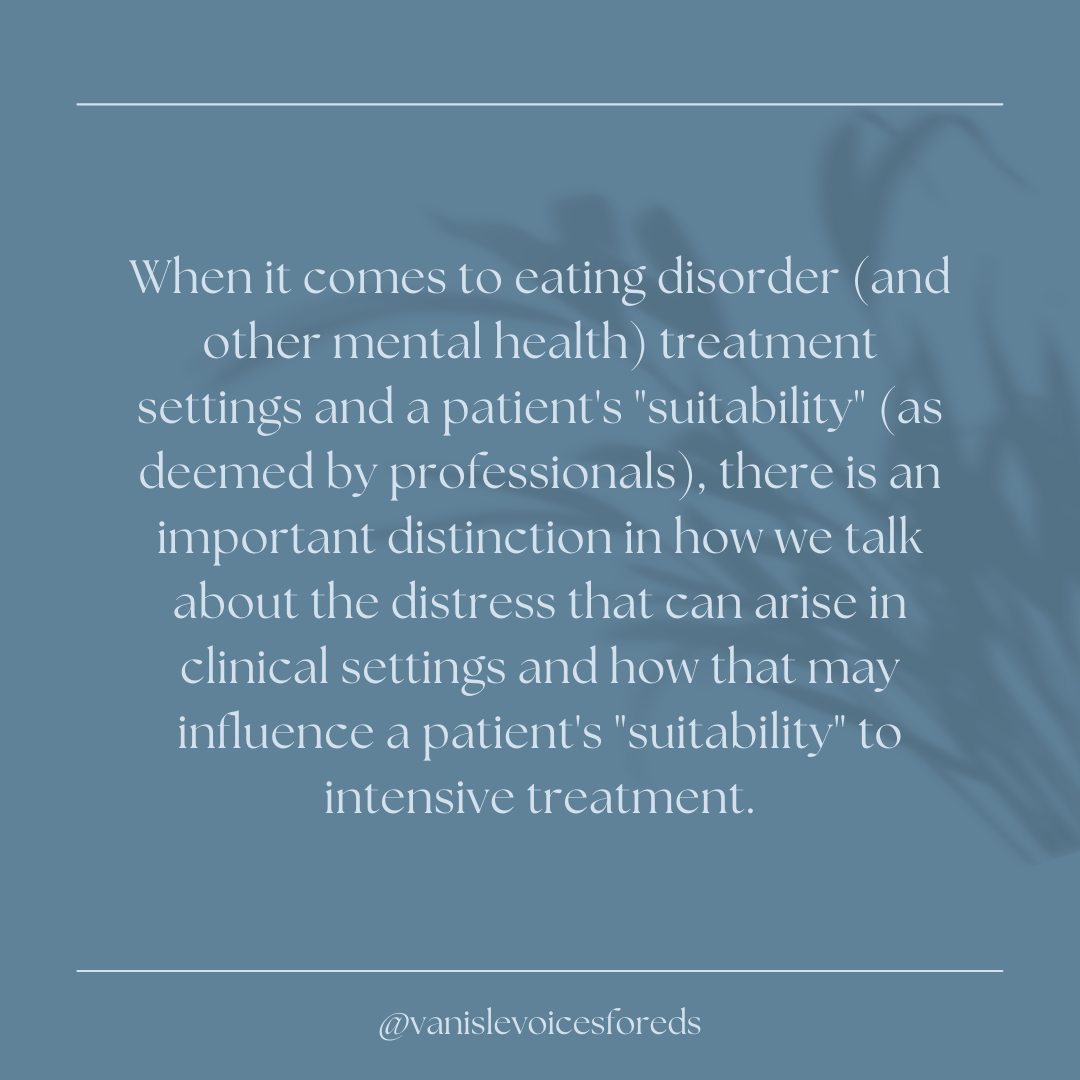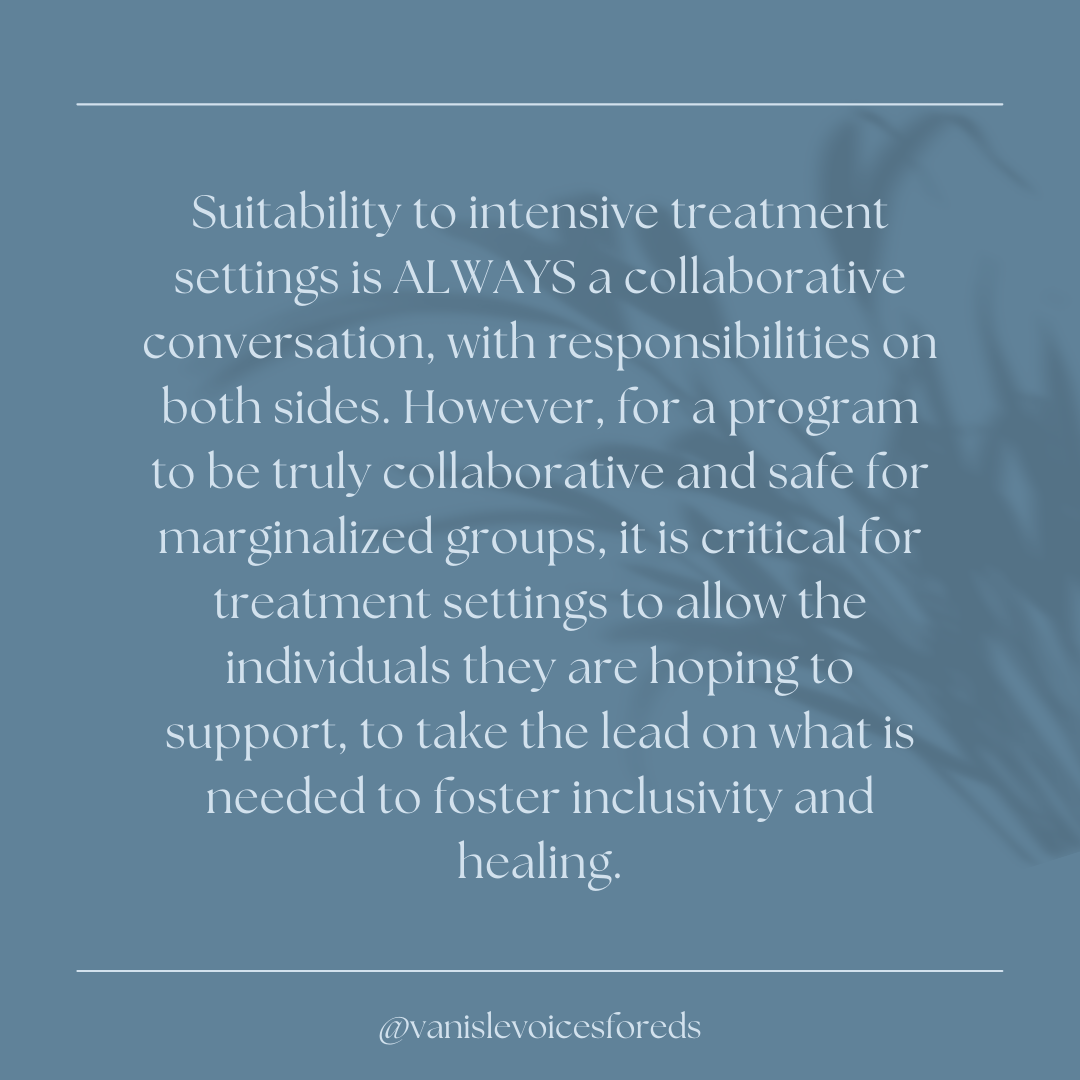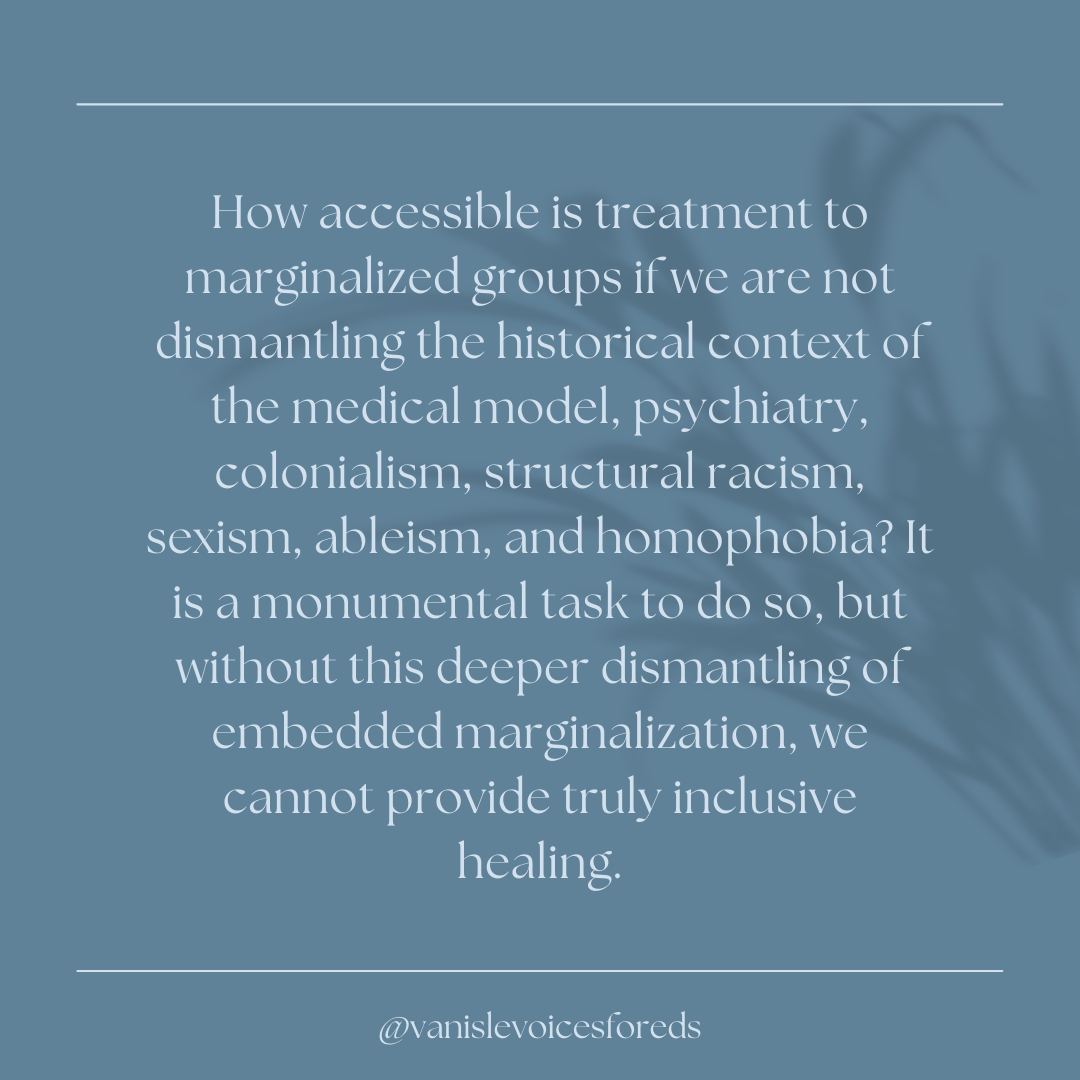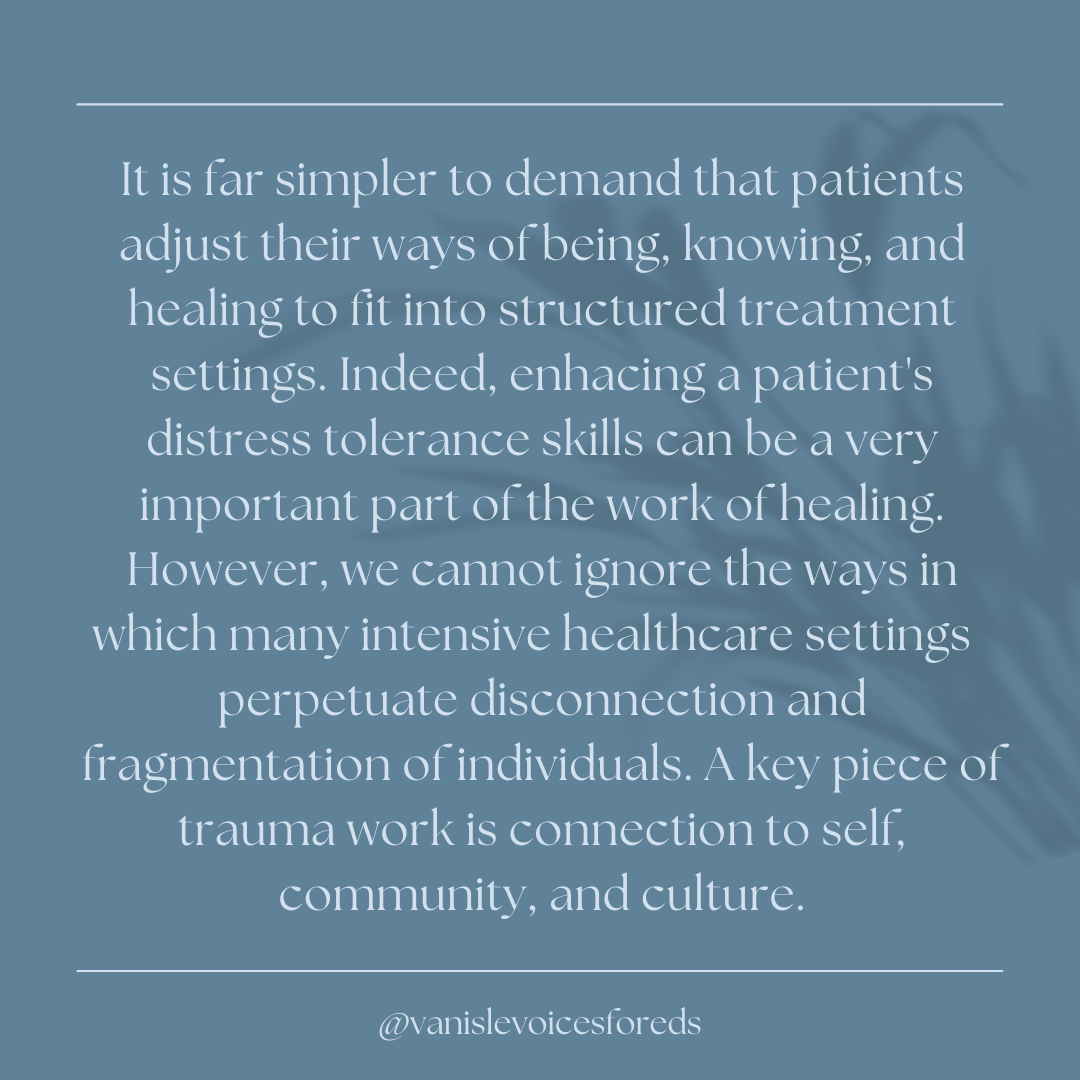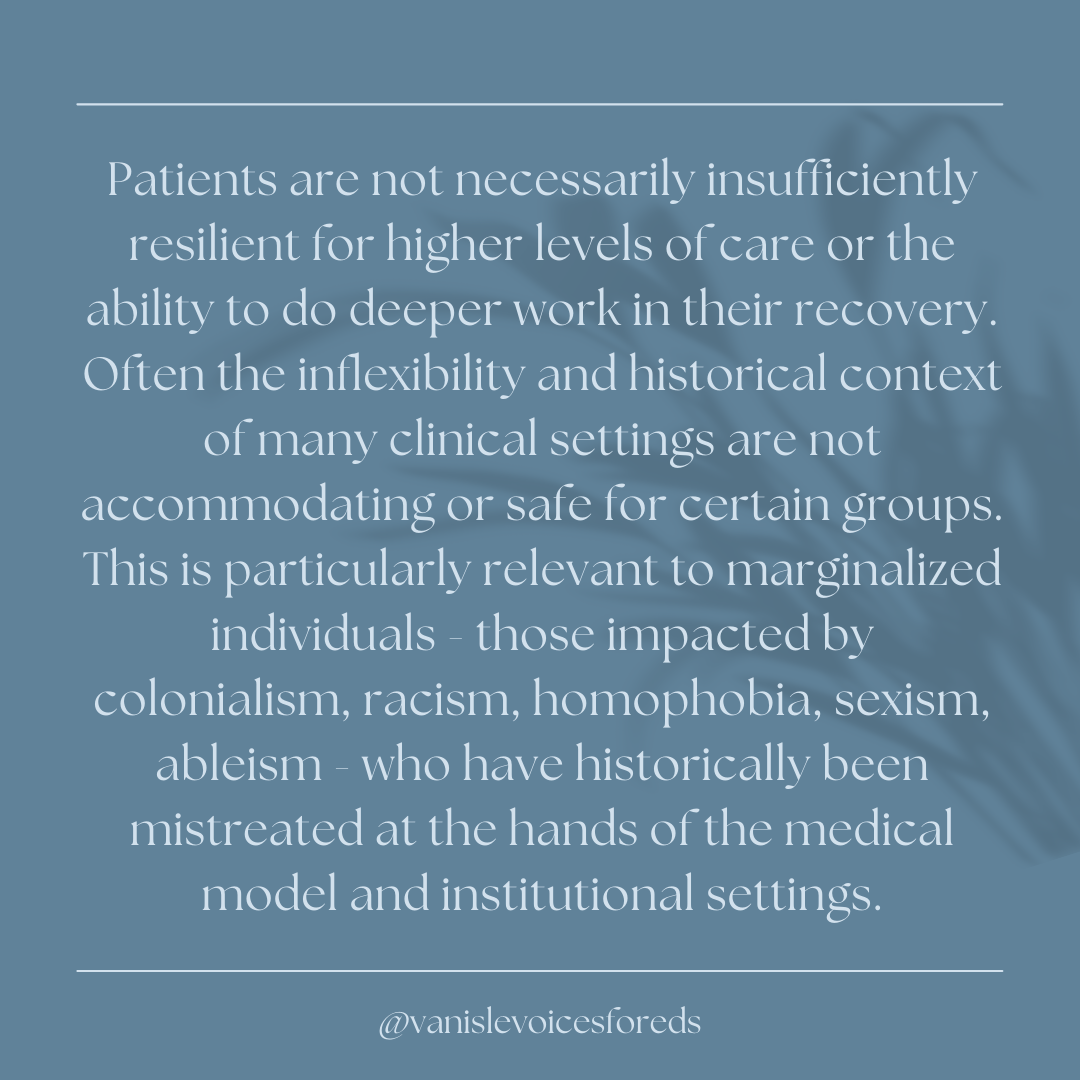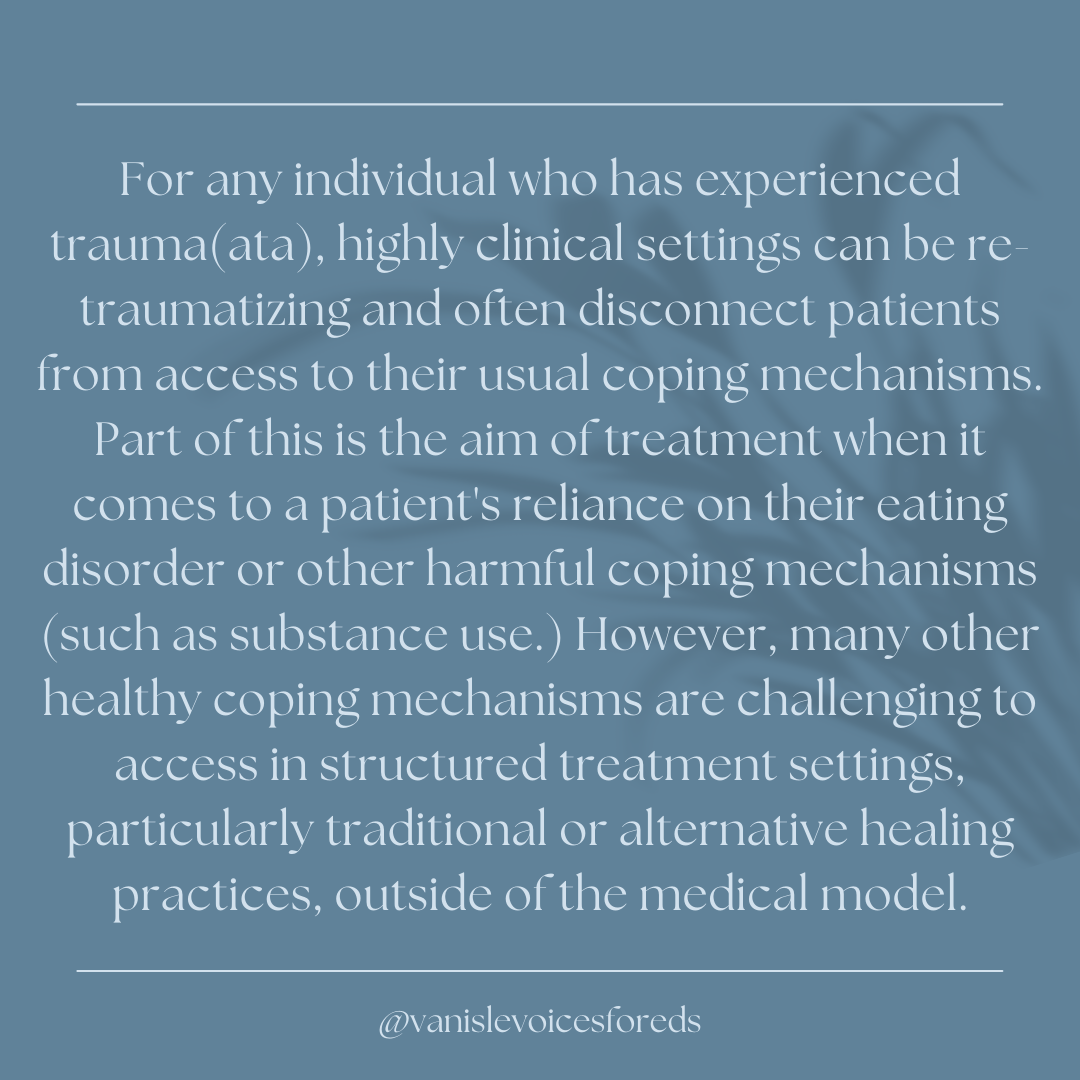When it comes to eating disorder (and other mental health) treatment settings and a patient's "suitability" (as deemed by professionals), there is an important distinction in how we talk about the distress that can arise in clinical settings and how that may influence a patient's "suitability" to intensive treatment.
For any individual who has experienced trauma(ata), highly clinical settings can be re-traumatizing and often disconnect patients from access to their usual coping mechanisms. Part of this is the aim of treatment when it comes to a patient's reliance on their eating disorder or other harmful coping mechanisms (such as substance use.) However, many other healthy coping mechanisms are challenging to access in structured treatment settings, particularly traditional or alternative healing practices, outside of the medical model.
Patients are not necessarily insufficiently resilient for higher levels of care or the ability to do deeper work in their recovery. Often the inflexibility and historical context of many clinical settings are not accommodating or safe for certain groups. This is particularly relevant to marginalized individuals - those impacted by colonialism, racism, homophobia, sexism, ableism - who have historically been mistreated at the hands of the medical model and institutional settings.
It is far simpler to demand that patients adjust their ways of being, knowing, and healing to fit into structured treatment settings. Indeed, enhacing a patient's distress tolerance skills can be a very important part of the work of healing. However, we cannot ignore the ways in which many intensive healthcare settings perpetuate disconnection and fragmentation of individuals. A key piece of trauma work is connection to self, community, and culture.
How accessible is treatment to marginalized groups if we are not dismantling the historical context of the medical model, psychiatry, colonialism, structural racism, sexism, ableism, and homophobia? It is a monumental task to do so, but without this deeper dismantling of embedded marginalization, we cannot provide truly inclusive healing.
Suitability to intensive treatment settings is ALWAYS a collaborative conversation, with responsibilities on both sides. However, for a program to be truly collaborative and safe for marginalized groups, it is critical for treatment settings (where possible) to allow the individuals they are hoping to support, to take the lead on what is needed to foster inclusivity and healing.
- S.
